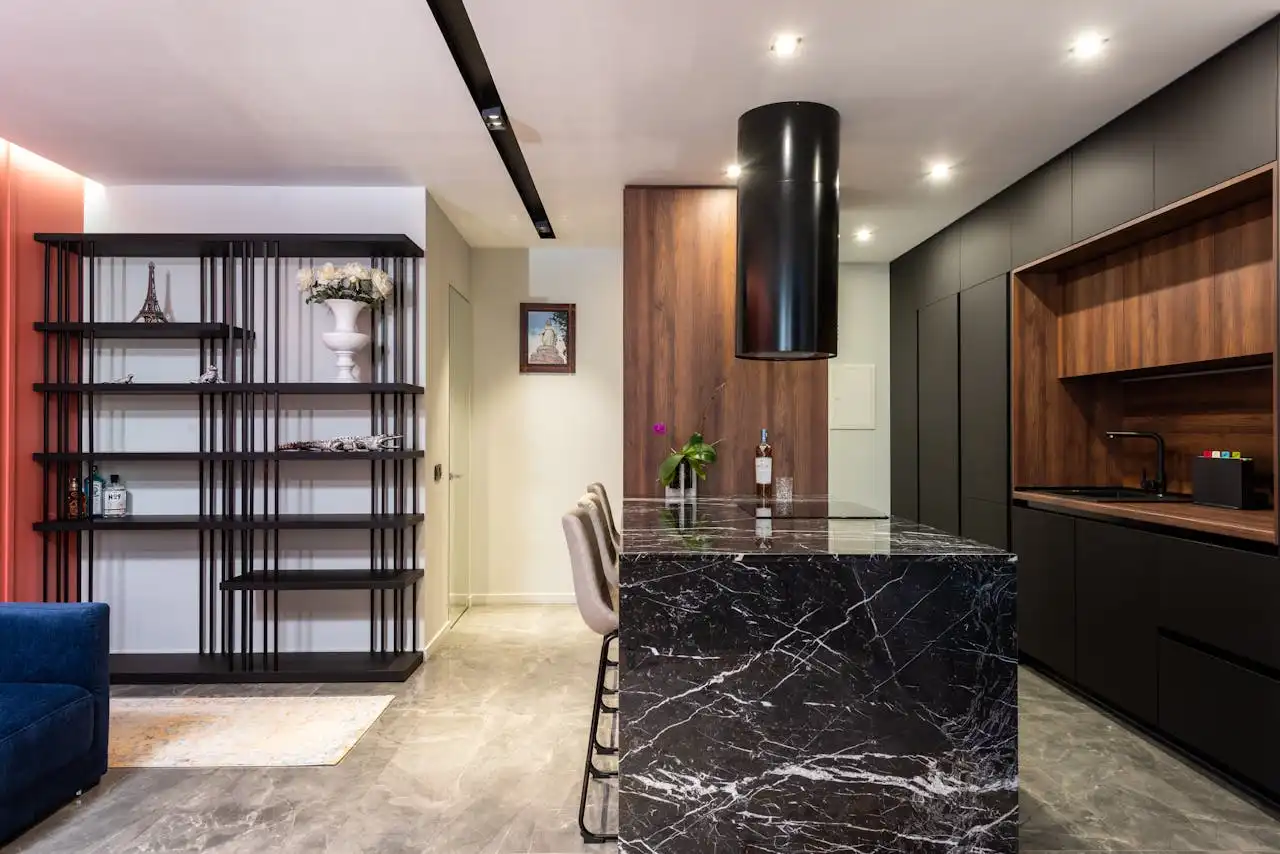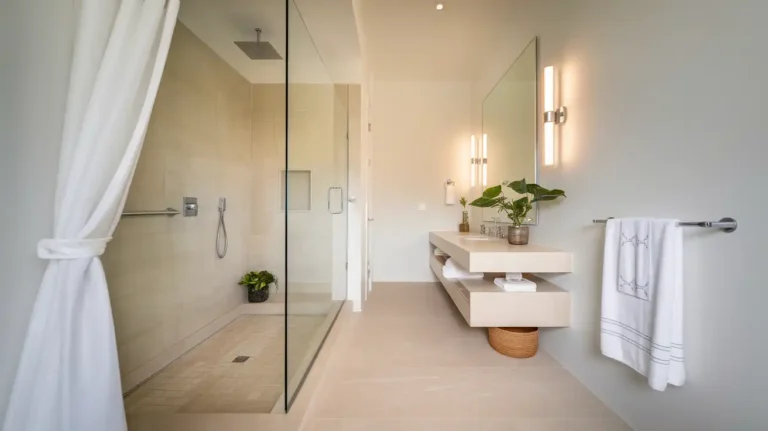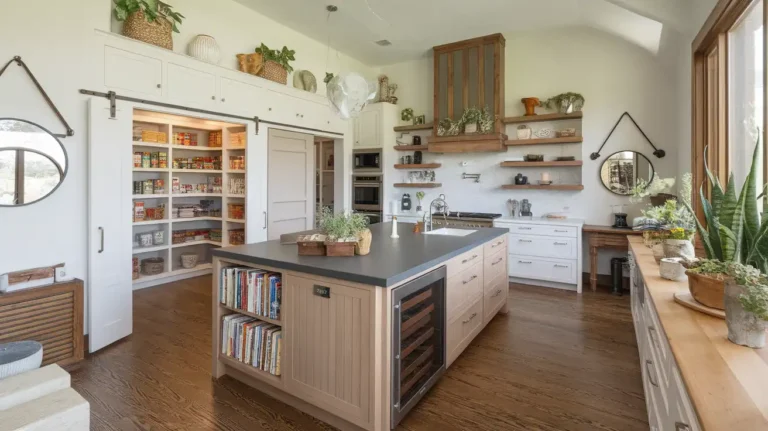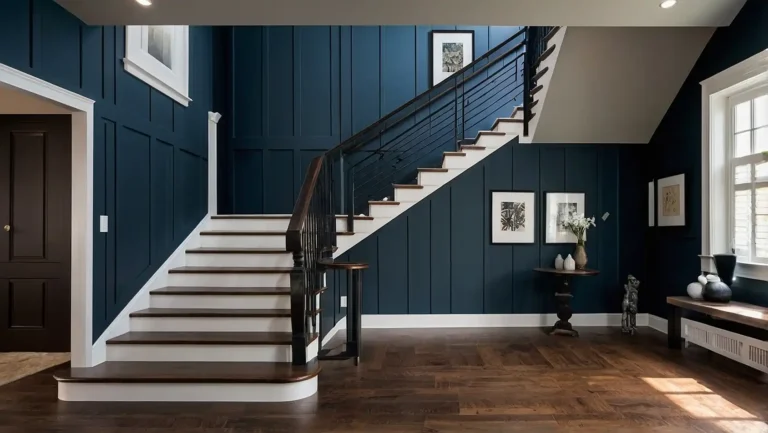How to Style Open Shelves Like a Pro (With Photo Inspiration)
Open shelving transforms your space from ordinary to extraordinary when you style it right.
You’ll discover that these versatile storage solutions offer endless opportunities to showcase your personality while keeping essentials within reach.
Whether you’re working with kitchen shelves, living room displays, or bathroom storage, the key lies in balancing function with beauty.
You don’t need expensive items or professional design skills to create stunning arrangements.
Your shelves become curated galleries that tell your story through carefully chosen objects, books, and everyday items.
With the right techniques, you’ll turn cluttered storage into Instagram-worthy displays.
The magic happens when you understand a few fundamental principles that professional designers use every day.
Start with a Clear Vision and Purpose
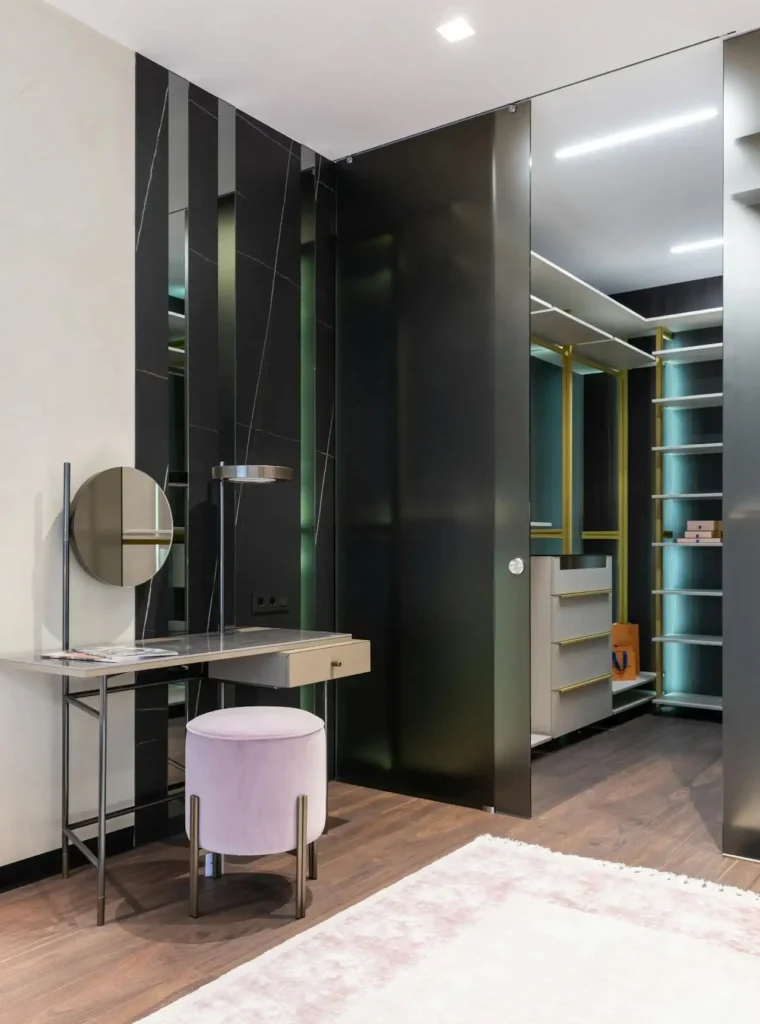
Before you place a single item on your shelves, you need to define their primary purpose. This decision shapes every styling choice you make moving forward.
Ask yourself whether these shelves will primarily hold everyday essentials, decorative objects, or a combination of both.
Kitchen open shelves might need to accommodate dishes, glasses, and cooking supplies while looking beautiful.
Living room shelves could showcase books, plants, and treasured collectibles. Write down the items you absolutely need to store on these shelves.
Bathroom shelves require a balance between toiletries and decorative touches that create a spa-like atmosphere.
This practical list becomes your foundation, ensuring your beautiful styling doesn’t sacrifice functionality. You’ll build your decorative elements around these necessities.
Consider your room’s overall style when planning your shelf displays. Your shelves should feel like a natural extension of your existing décor.
Modern minimalist spaces call for clean lines and plenty of white space, while bohemian rooms can handle more eclectic, layered arrangements.
Master the Art of Color Coordination
Color creates the visual thread that pulls your entire shelf display together. You’ll want to choose a cohesive color palette that complements your room while adding visual interest to your shelves.
Start with your room’s existing color scheme and select 3-4 colors that already appear in your space.
This might include your wall color, furniture tones, and accent colors from artwork or textiles.
Using colors that already exist in your room ensures your shelves feel integrated rather than disconnected.
Consider the power of monochromatic schemes for sophisticated looks. Varying shades of the same color family create depth and interest without overwhelming the eye.
Think cream, beige, and warm white for a serene feel, or different shades of blue for a calming coastal vibe.
Don’t forget about natural tones as your neutral base. These natural materials add warmth and texture while maintaining visual harmony.
Wood tones, wicker baskets, and ceramic pieces in earthy colors provide grounding elements that work with almost any color scheme.
Metallic accents serve as your jewelry for open shelves. Brass candlesticks, copper planters, or silver picture frames add glamour and reflect light throughout your display.
Stick to one metal finish per shelf arrangement to maintain cohesion.
Create Visual Balance Through Strategic Placement
Professional designers rely on visual weight distribution to create pleasing shelf arrangements.
You’ll achieve this balance by considering both the physical weight and visual impact of each item you place.
Heavy, dark, or large items carry more visual weight than light, bright, or small pieces.
Place these heavier elements strategically to anchor your display without creating lopsided arrangements.
A large ceramic vase on one side might balance several smaller items grouped together on the opposite side.
The triangle rule works wonders for shelf styling. Arrange items in triangular formations with different heights to create natural, pleasing compositions.
Place your tallest item at one point, medium height at another, and shortest at the third point of your imaginary triangle.
Odd numbers feel more natural and dynamic than even groupings. Style items in groups of three, five, or seven when possible.
This principle works whether you’re arranging books, plants, or decorative objects. Leave breathing room between groupings.
Overcrowded shelves create visual chaos and make it difficult to appreciate individual pieces. Aim to fill only 60-70% of your shelf space, leaving the rest for visual rest.
Layer Heights and Textures for Dynamic Interest
Varying heights creates the visual rhythm that makes shelf displays captivating. You’ll want to include tall, medium, and short items to guide the eye naturally across your shelves.
Stack books horizontally to create platforms for smaller decorative objects. Place a small plant, candle, or sculpture on top of your book stacks.
This technique instantly adds height variation while making your books part of the styling rather than just storage.
Incorporate items that lean against the wall for added dimension. This layering technique adds depth and prevents flat, boring displays.
Large cutting boards in the kitchen, artwork, or decorative trays create vertical lines that break up horizontal shelf lines.
Texture variation keeps your eyes engaged and prevents monotonous arrangements. Each texture catches light differently, creating visual interest throughout the day.
Combine smooth ceramics with rough woven baskets, glossy books with matte pottery, or sleek metal with natural wood.
Consider transparent and translucent items to add lightness to your displays.
Glass vases, acrylic containers, or crystal decorative pieces allow light to pass through, preventing your shelves from feeling heavy or cluttered.
Incorporate Living Elements for Freshness
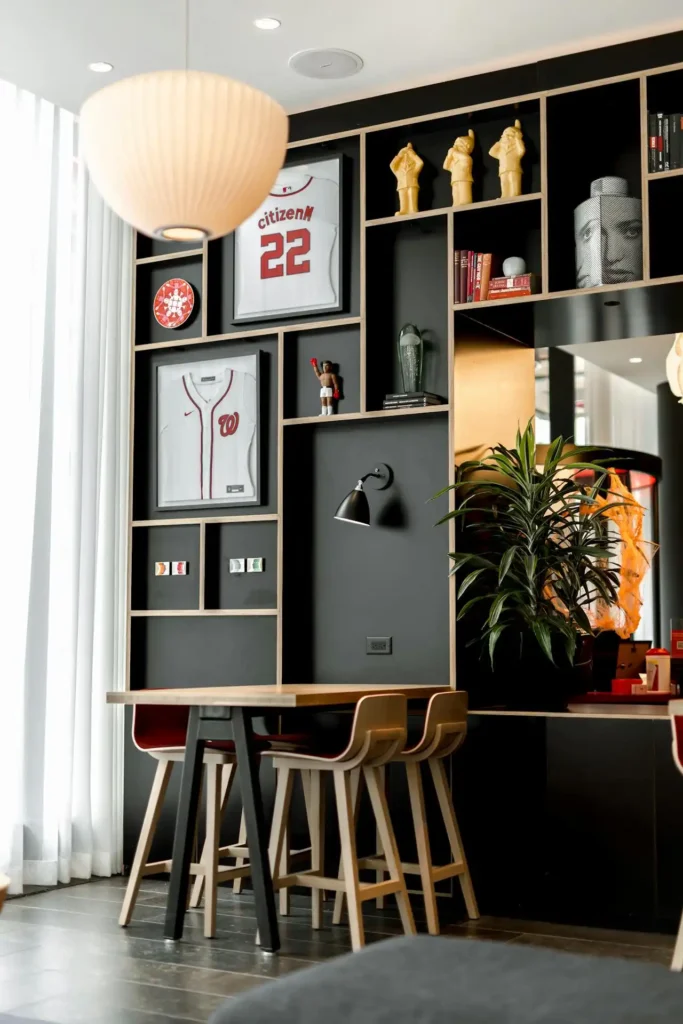
Plants breathe life into any shelf display while purifying your air and connecting you with nature.
You don’t need a green thumb to successfully incorporate greenery into your open shelving.
Choose plants that match your shelf’s lighting conditions. Position these plants where their trailing vines won’t interfere with daily use.
Bright, south-facing shelves can handle sun-loving succulents or flowering plants, while dimmer areas need low-light champions like pathos, snake plants, or ZZ plants.
Vary your plant container styles to match your overall aesthetic. Ceramic planters work beautifully in modern spaces, while woven baskets suit bohemian styles.
Ensure all planters have drainage or use them as decorative covers for practical plastic pots.
Trailing plants add graceful movement to your displays. Pathos, string of pearls, or ivy create beautiful cascading effects that soften harsh shelf lines.
Fresh flowers provide temporary beauty and seasonal interest. Rotate different blooms throughout the year to keep your displays feeling fresh and current.
Simple single-stem arrangements often work better than elaborate bouquets in shelf displays.
Mix Functional Items with Pure Decoration
The most successful open shelf displays seamlessly blend practical storage with beautiful decorative elements.
You’ll create more interesting and livable spaces when you embrace this dual purpose.
In kitchen settings, display your most attractive dishes, glassware, and serving pieces prominently.
Beautiful ceramic bowls, vintage glasses, or colorful plates become decorative elements while remaining easily accessible for daily use.
Incorporate attractive storage solutions that enhance rather than detract from your styling.
Woven baskets, wooden boxes, or ceramic canisters hide clutter while adding texture and visual interest to your shelves.
Choose functional items based on their aesthetic appeal as well as their utility. Remember that the most-used items should occupy the most accessible shelf positions.
A beautiful cutting board, attractive canisters, or elegant storage jars contribute to your overall design while serving practical purposes.
Place everyday essentials at eye level or within easy reach, using the highest and lowest shelves for decorative items or less frequently used pieces.
Establish Focal Points and Visual Anchors
Every successful shelf display needs focal points that draw the eye and create visual interest. Consider seasonal rotations to keep your displays feeling fresh and current.
You’ll establish these anchor points through strategic placement of your most striking or meaningful pieces.
Choose one standout item per shelf to serve as your focal point. Create collections and group similar items together for greater impact.
This might be a large piece of artwork, an unusual sculpture, a vibrant plant, or a collection of books with beautiful spines. Build your other elements around this central piece.
A collection of white ceramics, vintage books, or small plants creates more visual weight than scattered individual pieces.
These groupings become natural focal points within your overall display. Use lighting to highlight your favorite pieces and create ambiance.
Small battery-operated LED lights, plug-in picture lights, or strategically placed candles can transform your shelves from day to night displays.
Swap out a few key pieces quarterly to reflect changing seasons or your evolving style preferences without completely redesigning your entire shelf system.
Avoid Common Styling Mistakes
Understanding what doesn’t work helps you create more successful displays. Resist the urge to fill every inch of space.
You’ll save time and frustration by learning from common open shelf styling mistakes before you make them yourself.
Avoid pushing everything against the back wall. Pull some items forward to create depth and visual layers.
This simple technique immediately makes your displays look more professional and intentional.
Don’t make everything the same height. Monotonous arrangements bore the eye and waste the dynamic potential of open shelving. Vary your heights dramatically for maximum visual impact.
Overcrowded shelves create visual chaos and stress rather than the calm, curated look you’re after. Embrace white space as an important design element.
Skip matching everything perfectly. While cohesion matters, exact matches can feel sterile and uninspiring.
Embrace subtle variations in color, texture, and style for more interesting displays.
Don’t ignore the practical aspects of your chosen items. Beautiful pieces that don’t fit your lifestyle or storage needs will eventually create frustration rather than joy.
Maintain Your Styled Shelves
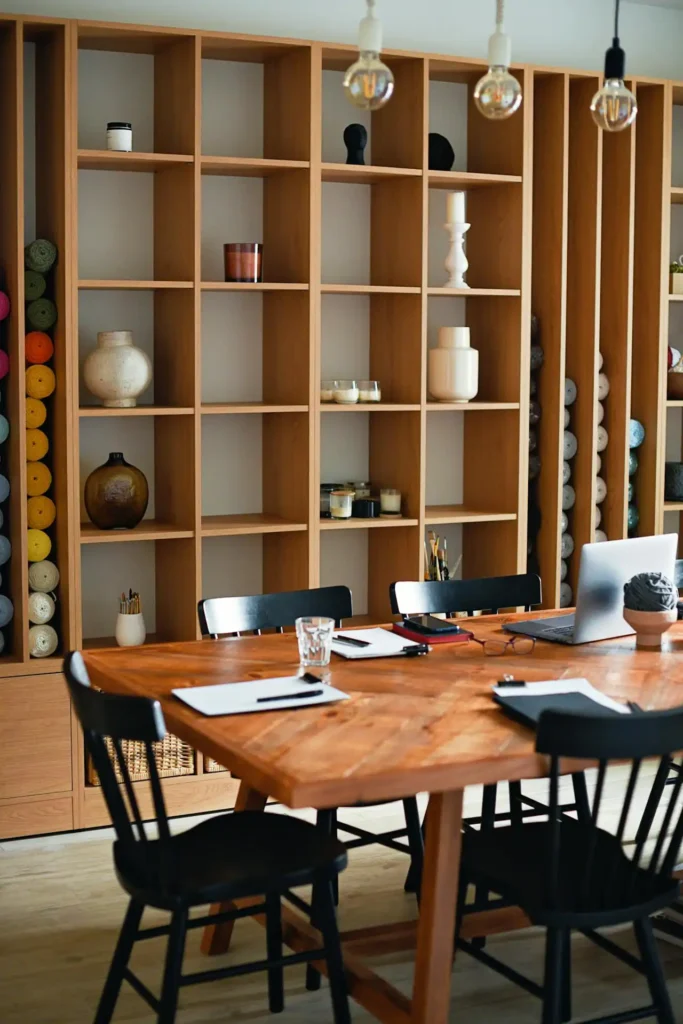
Creating beautiful shelf displays is just the beginning. You’ll need simple maintenance strategies to keep your carefully curated arrangements looking their best over time.
Establish a weekly dusting routine to prevent buildup that dulls your display’s impact. Keep replacement items on hand for seasonal switches or when pieces break or wear out.
Use a microfiber cloth to gently clean each item, taking care not to disturb your carefully planned arrangements.
Rotate items periodically to prevent sun damage and maintain visual interest.
Move pieces that receive direct sunlight to different positions every few months to ensure even aging and prevent fading.
Having backup candles, small plants, or decorative objects makes it easy to refresh your displays without starting from scratch.
Document your favorite arrangements with photos before making changes. This creates a reference library of successful combinations you can recreate or modify in the future.
Conclusion
Transform your open shelves into stunning focal points by balancing function with beauty, playing with heights and textures, and maintaining thoughtful curation over time.

